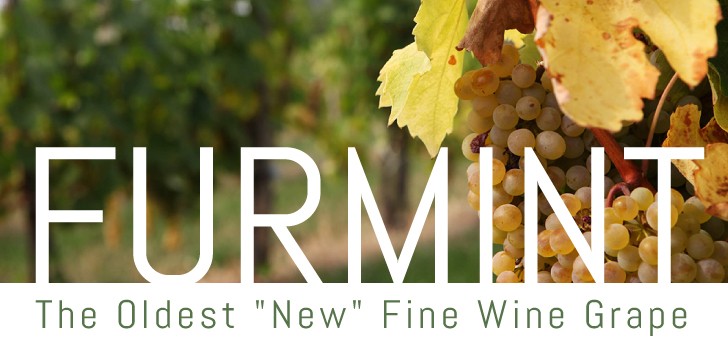When talking about noble wine grapes, chances are good that Furmint isn’t on the tip of your tongue (figuratively, or literally). Which is a shame, because its white wines might be some of the most interesting that you’re not (yet) drinking.
Among the descriptors that you might read on a Dry Furmint back-label—zesty, with orange, limes, and flint notes when young; nutty spices and dried fruit flavors after aging—you won’t find its most distinguishing characteristic: irony.
While grown in Slovenia, Austria, Croatia, South Africa, and the USA, most Furmint is found in nearly 10,000 acres of plantings in Hungary, almost all in Tokaj (pronounced Tok-eye). That relative scarcity hasn’t stopped Furmint from quietly building a reputation for producing excellent, long-lived dry wines, earning gold medals at the San Francisco International Wine Competition, and becoming a critical and taste-maker darling. Here are some of the more fascinating—and ironic—aspects of Furmint.
An Old “New” Grape
The biggest irony surrounding Furmint is that it took so long to realize that it could make world-class dry wines. Wines produced using Furmint have been documented as far back as the 1570s (in Tokaj’s Hétszőlő vineyard). Along with the grape Hárslevelű, Furmint has for centuries been a key component in sweet botrytized Tokaji Aszú wines, which by the 1800s were considered the world’s best. Aszú was literally the wine of kings: entire vineyards (such as the newly-restored Öreg Király plantings) were at one time earmarked to make wines exclusively for royalty.
It might seem obvious that ripe Furmint grapes should make excellent dry wines, given that their overripe counterparts made such celebrated and age-worthy wines historically. Ironically, that simply wasn’t the case. “This focus on single vineyard Furmints is very recent here; it emerged only in the past two decades,” notes Erzsébet Cellars estate manager Hajni Prácser. “Tokaj’s historical vineyards are yielding exceptional dry wines year to year, wines that display remarkable nuances of character from site to site.”
Humble Grape, Royal Parentage
Dry Furmint’s steady, humble emergence on the fine wine scene belies the vinous royalty of its genetic parentage. DNA analysis has shown a parent/offspring relationship between Furmint and Gouais Blanc. A 1999 discovery revealed that Gouais Blanc and Pinot Noir are the natural parents of sixteen grape varieties, such as Gamay Noir and Chardonnay, and that Furmint is the offspring of Gouais Blanc and another unkown grape (check out Jancis Robinson’s Wine Grapes for more on the grape’s heritage). Significantly, this means that Furmint is directly related to the famous Gamay grape of Beaujolais, as well as to the even more famous Riesling and Chardonnay.
All Legend, No Origin Story
Furmint’s final irony is that we don’t know from where, exactly, it came, despite having no shortage of legends expounded over its origins.
As reported in Wine Grapes, most of Furmint’s origin legends seem hell-bent on making the grape Italian (it’s not). One such tale has Furmint finding its way to Tokaj in the early twelfth century, courtesy of Italian missionaries, at the invitation of King Stephen II. Another suggests Furmint was brought to Hungary by colonists from Italy’s Formia. Yet another, more romantic tale sees the grape being introduced by the Count of Formentin, an Italian soldier from Colio who settled in Tokaj after the Seven Years’ War. We can eliminate the latter story based on historical record (mention of Furmint in Hungary predates the Seven Years’ War). The former two legends are more mundanely undermined by genetic evidence: there are at least four distinct types of Furmint in Tokaj that share a DNA profile, strongly suggesting that the grape originated there.
Suggested Producers
Balassa Winery, Barta Pince, Béres Winery, Dobogó, Erzsébet Cellars, Gizella Cellar, Gróf Degenfeld, Hétszőlő, Holdvölgy Winery, Kvaszinger Winery, Majoros Estate, Szent Donát Winery, Szepsy
Sources:
- Interviews and video work during FurmintUSA.com program
- https://www.wine-searcher.com/grape-178-furmint
- Wine Grapes, Jancis Robinson, Kindle Edition
- https://www.wine-searcher.com/grape-178-furmint
- https://hungarytoday.hu/hungarian-white-wines-win-big-san-francisco-international-competition-83261/
https://en.wikipedia.org/wiki/Furmint














